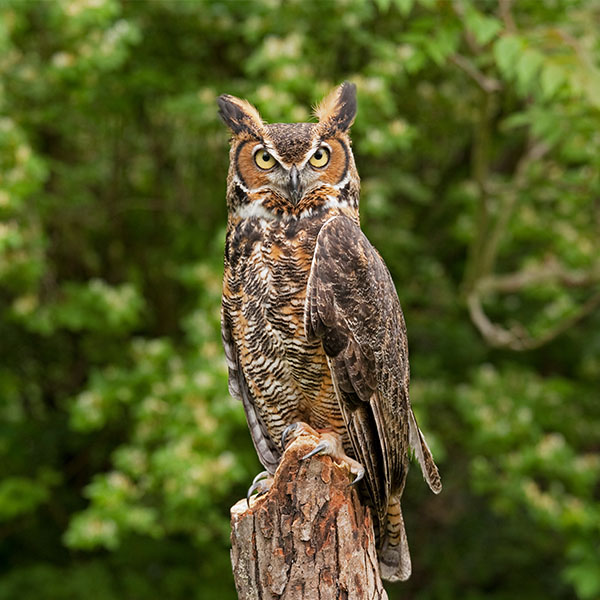Great Horned Owl
Bubo virginianus

Animal Ambassadors
The great horned owl is the most common owl of the Americas, easily identified by the iconic feather tufts on its head. While these are often referred to as horns or ears, they are actually just feather tufts called “plumicorns.” It’s thought that they help with camouflage, since they help break up the silhouette of the owl’s head and give it a more jagged, bark-like appearance. Relative to their size, great horned owls have an incredibly strong grip strength, ranging from 200 to 500 psi. This is comparable to the strength of a bald eagle! This powerful grip, along with their impressive camouflage and silent flight, allows these birds to be incredibly well-adapted predators. Great horned owls pursue an impressively wide range of prey, including small rodents, hares, waterfowl, porcupines, skunks, ravens, songbirds, scorpions, reptiles, fish, and other raptors. While typically most active at night, these opportunistic hunters are known to hunt even in broad daylight, depending on prey behavior and availability. Although they aren’t typically seen by people due to their nocturnal habits, great horned owls make the classic hooting sounds that we typically associate with owls.
Rodents, raccoons, skunks, rabbits, songbirds, birds, other owls
Throughout North America
15 years / 30 years
Forests, deserts, and open country
3-4 ft
1-2 lbs
